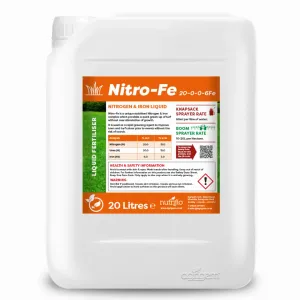What Does Iron Do?
Of all the micronutrients (Manganese, Boron, Zinc ect), Iron is needed the most by plants. It is a vital element for plant growth and health; it’s main function being to reduce nitrate and sulphate levels and produce energy within the plant. Iron is also essential in the formation of chlorophyll, the green pigment of plant leaves, which in turn aids the crucial process of photosynthesis.
Symptoms of Iron Deficiency:
The main symptom of Iron deficiency in plants is interveinal chlorosis, which is when the plant leaves yellow between the green veins. The leaves affected will most likely be the younger leaves as Iron is largely immobile in plants.
Control:
The pH of the soil the plant is growing in will greatly affect how much Iron the plant absorbs. If the pH of the soil is above 6.5, the plant cannot absorb the Iron as it is converted to a form inaccessible to plants. We recommend using our Soil Analysis Service to learn more about your soil, including the pH. This will then allow you to make the amendments needed to rectify the deficiency. To quickly green up plants, use a product containing a high level of Iron, such as Nutriflo Nitro-Fe.
We recommend using a fertiliser with a high Iron content, such as Nutriflo Nitro-Fe, which will quickly green up your plants.
For more information on correcting an Iron deficiency, please get in touch with our sales team on 01522 246491.




